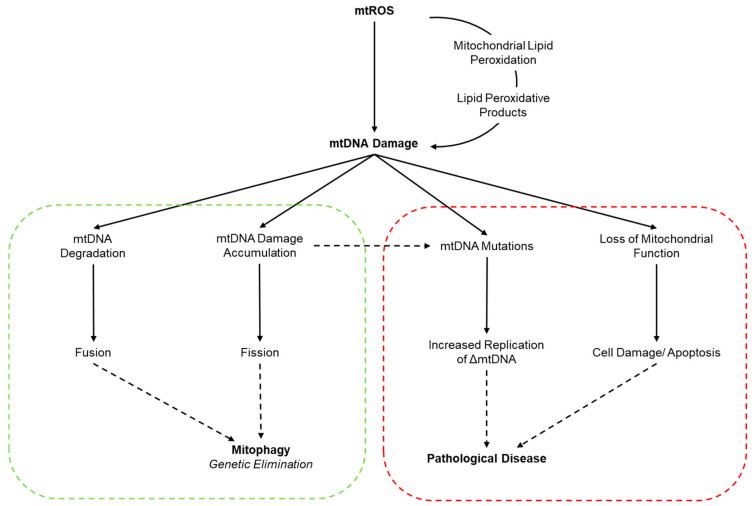Figure 1.
Cellular responses and downstream effects of mtDNA damage. The increased generation of ROS (and/or loss of mtDNA repair), and increase in lipid peroxidative products can potentiate mtDNA damage. Green shading represents the physiological and protective responses to mtDNA damage whereby mitochondria with excessive damage are segregated and compensated via fission and/or fusion, respectively, and are subsequently removed by mito/autophagy. Red shading indicates pathophysiological responses to mtDNA damage whereby excessive mtDNA damage can result in mtDNA mutations and eventual heteroplasmy; thus, causing a loss of mitochondrial function and potentially leading to organ pathology and disease. Adapted with permission from Van Houten et al. [30].

